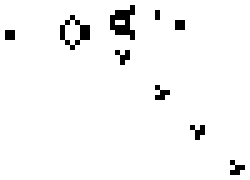Iraq Body Count Vocoder
As the U.S. lurches ever closer to a war with Iran I’ve thought back to when I first heard George W. Bush’s weirdly placid announcement of what would, of course, turn out to be a decades-long catastrophe. Given the vocoder’s origins in secret military communication, I thought it would be interesting to use the same technique to modulate public political speech in favor of war with some of its consequences. This is just quick sketch in Max, inspired in large part by conversations with Larry Bogad, particularly regarding his Economusic performance project. The result is interesting: a questioning upward inflection, almost a crack in the voice, whenever the body count rises. Here’s the patch














